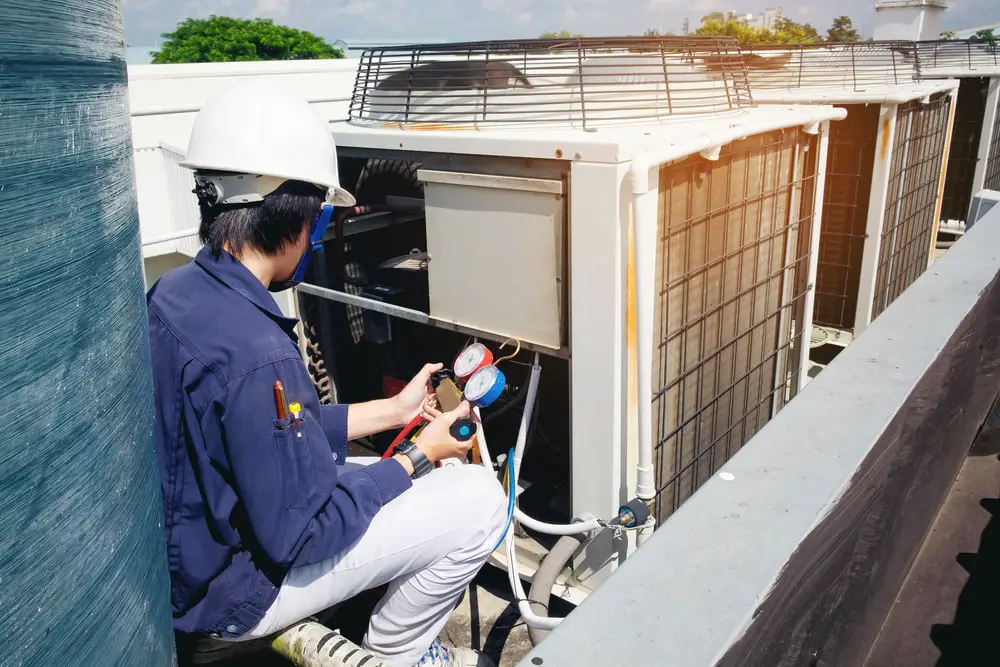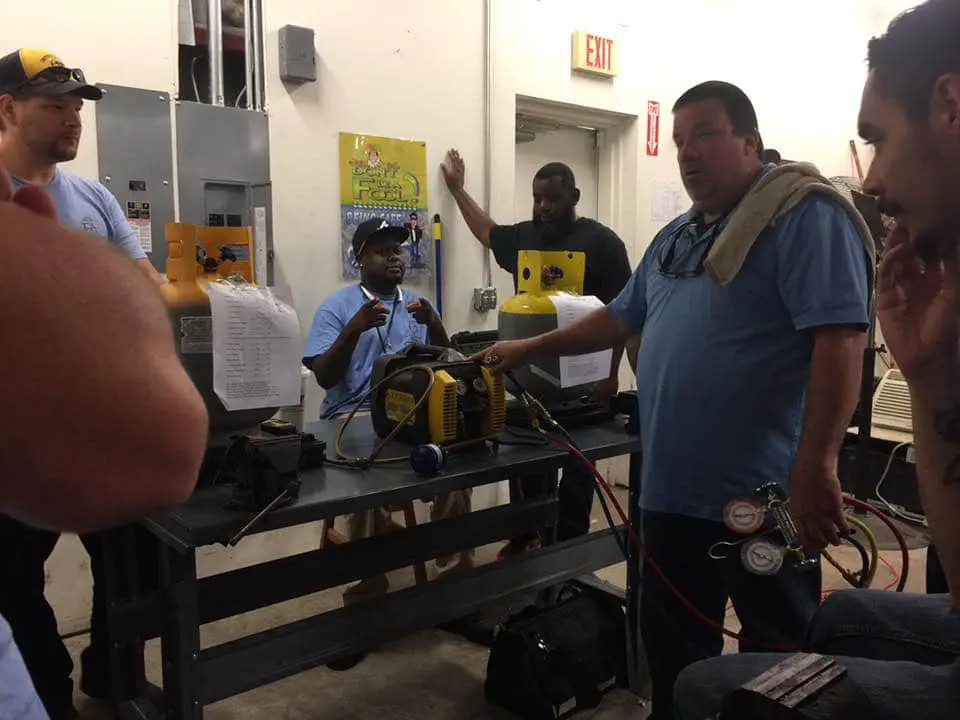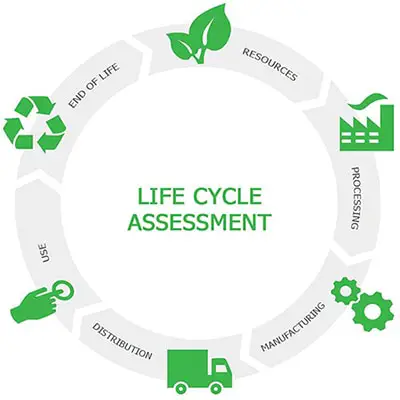HVAC is short for heating, ventilation, and air conditioning. It is the system that provides heating and cooling services to buildings and houses. Before the HVAC system was created, heating, ventilation and air conditioning were considered different units and were usually split between three or more devices. Technology has changed all of these.
Nowadays, the HVAC system has been integrated with other home systems in a process called building automation. With recent trends geared towards protecting nature, technology has made another change in the HVAC system with the introduction of more eco-friendly compressors that leave a smaller carbon imprint on the environment.
The components of HVAC have existed since the late 1800s, but it was only in the 1980s that the American Society of Heating, Refrigerating, and Air Conditioning Engineers set new standards for the minimum energy efficiency of building designs. The new energy codes and standards set minimum efficiency requirements for new and renovated buildings which would ensure the reduction of energy consumption and by-product emissions over the lifetime of the building.
These standards referenced areas of construction such as wall and ceiling insulation, window and door specifications, HVAC equipment, and lighting fixtures. They are considered to be major milestones in the history of HVAC and paved the way for smart HVAC systems.

How Has Automation Change The HVAC System?
Johnny N. Holst of the Institute of Energy and Process Technology of the Norwegian University of Science and Technology characterized how building automation systems have changed HVAC systems through the following:
- Automation permits each occupant to adjust workspace temperature according to his preference.
- The system can now monitor usage and adjust temperature based on saved profiles.
- Air quality can now be adjusted based on the occupancy of each room.
- The system can now be adjusted to meet desired humidity, temperature and air-flow speeds.
- HVACs are now designed to distribute both variable air volume and constant air volume.
According to him, the essence of Buildings Automation System is in the control technology which allows integration, automation, and optimization of all the systems, services, and equipment that manages the environment of the building

Further, he related that HVAC installations can be intelligent with their automation and integration:
- Building systems like lighting systems, HVAC and security systems should be combined and integrated.
- An intelligent building should be able to learn about the interactions of the HVAC system with itself. To do this, it must be equipped with self-develop algorithms which learn building behavior without additional programming.
- Building systems should be able to develop algorithms and instructions to take advantage of distributed intelligence within control systems.
In a nutshell, automation has allowed us to control HVAC systems along with other home or building systems through a single platform. For example, there are smart home providers in the United States which allow a single control panel for the thermostat and the home security system.
Automation has also allowed each individual in an apartment complex to control the temperature in his room based on his own preferences. This is also true for individual office rooms in an office building.
HVAC systems can also be programmed to perform certain functions at a certain time of the day, like setting the air conditioner at home to turn on an hour before arriving from work or setting it to turn off at your usual departure time.

The New Eco-Friendly HVAC and Refrigeration System
With the recent advancements in HVAC systems, one problem has continuously baffled engineers. Compressors are always on over-compression rate, as the HVAC system is always pressed to meet a building’s occupancy demand for varying weather conditions. This results in higher costs and a higher carbon imprint on the environment.
Daikin Applied Americas addresses this challenge with the design and implementation of Variable Volume Ratio (VVR) technology in their new Pathfinder air-cooled chiller. This technology allows the compressor to vary its internal compression ratio as water and air temperature fluctuate. This is designed to mimic real-world scenarios where the air and water temperatures fluctuate greatly.
To understand VVR technology, we must first examine the traditional screw compressor. The traditional screw compressor has a set compression ratio. Compression ratio refers to the ratio of the outlet pressure to the inlet pressure. The higher the compression ratio, the more pressure the compressor is adding to the gas it compresses. The traditional way is for buildings to use a compressor with a very high compression ratio to make sure that it will be capable of operating during times of extremely high ambient temperature.

The downside of this is that at normal operating temperature (which is the majority of the time), the compressor is still compressing the gas to very high pressure. This is a waste of energy and leaves a lot bigger carbon imprint on the environment than necessary.
The VVR Technology, on the other hand, senses the amount of compression needed at a given time and automatically adjusts the compressor output to meet this demand.
This means more efficient energy use and a lower carbon imprint. The VVR technology is at the heart of a more eco-friendly HVAC system which is crucial in qualifying for the green building standard.
The Green Building Standard
The National Green Building Standards (NGBS) is an American National Standards Institute (ANSI) approved certification program for buildings and building processes that are environmentally responsible and resource-efficient throughout their life-cycle. It is a point-based system where a structure can attain certification based on the sustainable and green practices incorporated in its design and construction.
Evaluators also examine the building’s operation and maintenance to see if it fits the green standard. These are the six key areas being looked at when evaluating a building for NGBS certification: site design, resource efficiency, water efficiency, energy efficiency, indoor environmental quality, and building operation and maintenance.
With the standard set for self-sustaining and more environmentally-friendly buildings, it will come as no surprise if the HVAC systems of the future will improve dramatically. Property owners and facility managers will seek technologies like the VVR, not only to drive down system costs in the long run but also to cater to the public clamor for a greener environment. Businesswise, the NGBS certification is a powerful marketing edge which could attract healthier occupancy rates and happier tenants.

HVAC Goes Mobile
Mobile technology puts control for the things that we need right at our fingertips. It is now also applied to the HVAC system control. Multiple home security providers have developed mobile applications where not only can we monitor the safety of our houses, but also adjust our thermostats remotely through the use of our mobile phones. This HVAC technology evolution exhibits a successful integration of HVAC with other home systems.
Having access to your thermostat even when you’re away from home is important for a number of reasons. First, it will help you save a lot of money. No one wants to come home to a sweltering house after a day of work, but leaving the air conditioning on while no one is home is impractical. With a mobile device, turning your air conditioning on no longer requires you to be physically at home.
You can even set your HVAC to perform certain functions at certain times, like turning the AC or heater off when the outside temperature is not that cold or hot. Having access to your temperature sensors also allows you to monitor your house in case of fire.
A sudden increase in temperature is a telltale sign of this and gives you the opportunity to immediately ask someone to check your house. For your wine cellar, cigar storage, or greenhouse – rooms where you need to keep the temperature constant, you can adjust the temperature to compensate for weather changes even when you’re away.
HVAC Trends 2017 And Onwards
The HVAC system has transformed through the years with technological innovations like automation, integration, the VVR, and mobile apps. Non-technological factors like the green building standard have also helped in shaping HVAC’s future. Newer elements of the HVAC technology evolution include industrial sensors that can monitor temperature, humidity, light, and motion. Software solutions for reducing energy consumption in heating and cooling systems are now also available. With these innovations in place, technology like the VVR will only get better as more people start to seek a more eco-friendly way of life.
Recently, HVAC systems have improved by leaps and bounds, so where can it still go from here? Experts believe that the next step is developing smart sensors. Instead of a person monitoring and adjusting the HVAC system, the next-generation HVAC systems will have smart sensors that employ real-time weather data to feed to an indoor facility that can automatically regulate temperature. These sensors will also help the system adjust to the sun’s movement, enabling the air conditioning to automatically turn up on the hottest side of the building.

Lastly, with the rise of the internet of things (IoT), the HVAC equipment of the future will be able to self-diagnose and send out its findings to the manufacturer or repair teams. The men and women who used to take care of the HVAC system will soon be taking care of computerized equipment rather than just mechanical components. Technology has not only changed the way we enjoy HVAC systems nowadays, but it has also changed the role of the people involved in maintaining this system.
This is a guest post on behalf of Florida Academy, an accredited Fort Meyers-based school whose programs include training for future HVAC technicians.
